Guide to Baking with Whole Wheat Flour
This post may contain affiliate links. Please read our disclosure policy.When I first started baking twenty years ago, I had no idea about the differences between various types of flour. Whatever I bought at the grocery store – usually an all-purpose flour – is all I thought I needed. Over the years, I’ve learned that the flour you choose has a big impact on your bread. I addressed flour in general in my guide to wheat flour. That guide gives you an overview of flour, in particular the different flours sold in the United States, and provides insight on which ones to choose from your grocery store. Today’s post is a companion guide that goes into detail about the ins and outs of baking (especially sourdough baking) with whole wheat flour.

What is Whole Wheat Flour?
Whole wheat flour gets its name from the way the grain is processed. In whole wheat flour, the entire (or “whole”) wheat berry is milled and then used in the flour. This is beneficial because you get all the nutrients of the whole grains that come from the bran, germ and endosperm of the wheat berry. Whole wheat flour often has more flavor than bread flour or all-purpose flour because of the flavor that comes from the bran and germ, both of which are sifted out of all-purpose and bread flour.
So why doesn’t everyone use whole wheat flour? It is a lot more difficult to get light, fluffy and airy bread using a whole wheat flour. Whole wheat flour includes the bran and germ, which act like little “shards” cutting the gluten strands while the dough is mixing and resting. This leads to a bread that is more dense and less elastic. In contrast, while bread flour is milled from the same hard wheat berry, the bran and germ are sifted out, leaving mainly the endosperm and a resulting flour that has the potential to become very elastic and smooth.
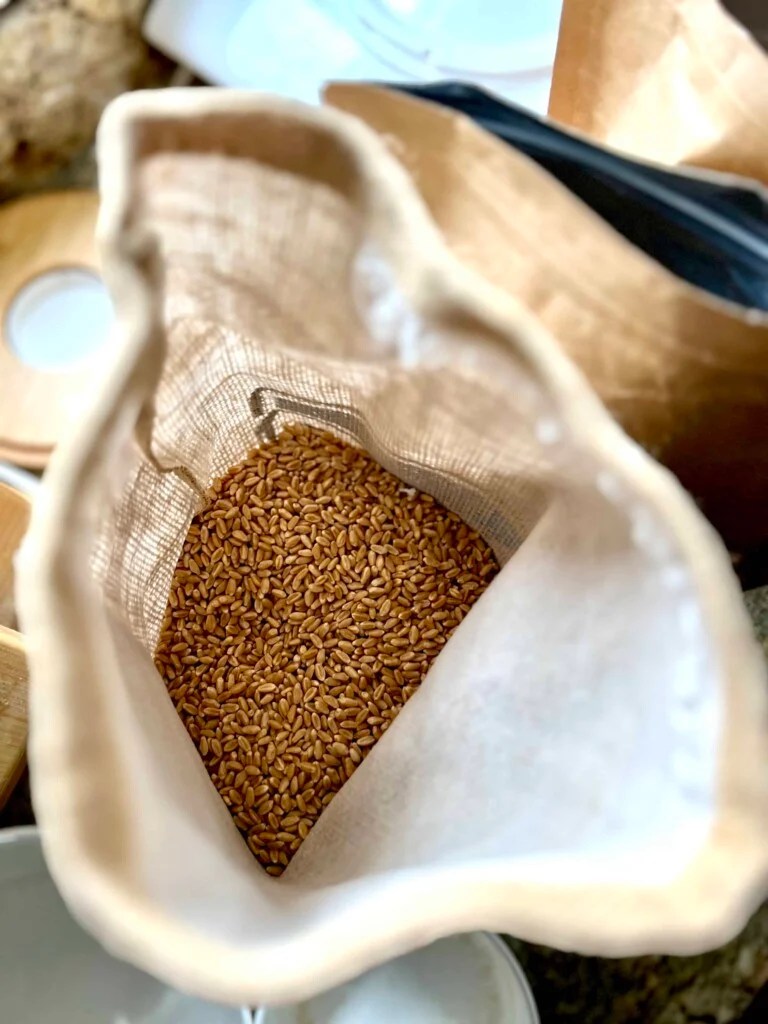
Different Varieties of Whole Wheat Flour
Wheat berries are grown in different regions of the United States and across the world. In the United States we categorize wheat as hard or soft. Hard wheat is higher in protein content and used mainly in breads. Soft wheat is lower in protein content and used in quick breads (muffins, cookies, pancakes, etc.).
Hard red wheat (spring and winter varieties):
- Hard red winter: accounts for 40% of total U.S. wheat production and is mainly used to produce bread flour. It is planted in the fall and harvested in the summer of the next year. It has around 10-13% protein content and is primarily used for bread baking.
- Hard red spring: accounts for 20% of total U.S. wheat production and is grown in the Northern plains. It has a shorter crop season and is planted in the spring and harvested in the fall. It has high protein content (12-15%) and blends well with other lower-protein wheat. It is used in bread baking e.g.: artisan breads, bagels, pizza crust, etc…
Hard white wheat (spring and winter varieties):
Hard white wheat is primarily grown in the Pacific Northwest, but also in a few other Northern states. It accounts for 10-15% of wheat grown in the U.S. It has a mild flavor, a high protein contenvt and is used for whole wheat breads, some noodles, crackers, cereals, etc… The protein content is anywhere from 10-14%. I like this hard white wheat that I buy in bulk.
Soft red wheat:
Soft red wheat is some of the wheat I buy from my local mill in Kentucky, though they’ve stopped selling wheat berries. It accounts for 15-20% of the wheat grown in the U.S. and is grown in more humid states along the Mississippi River and other Eastern states. It has a lower protein content at 8.5-10%, which means it can have trouble holding the structure of a loaf of bread but is perfect for flat breads, cakes, cookies, crackers, pancakes, quick breads and pastries.
Soft white wheat:
Soft white wheat makes up 10% of US wheat production and is grown primarily in the Pacific Northwest (but also a few other places in the US). It is used in pastries, biscuits, crackers, snack foods, Asian noodles and bakery products. The protein content is 8.5-10%. I really love this soft white wheat to use in many of my sourdough discard recipes.


Which whole wheat flour should I choose for baking?
When you walk into your local grocery store, you don’t often have very many choices of whole wheat flour. It’s usually already milled and is sitting on the shelf ready for you to bake with. Most whole wheat flour purchased off a grocery store shelf is going to be a hard wheat. It is best used for bread baking and will have a higher protein content. Branching out from the grocery store usually gives you more flour options. You can find mills online to purchase flour or wheat berries. Try out some different brands and flavors of wheat to find which you like the best. Just keep in mind:
- Soft Wheat is best for baking recipes that don’t use yeast
- Hard Wheat is best for breads
- A combination of soft and hard wheat is similar to an “all-purpose” flour


Freshly Milled Whole Wheat Flour vs Store Bought Whole Wheat Flour
It seems that everyone is talking about freshly milled flour these days, and for good reason! It has a lot of health benefits and tastes delicious. So here’s a comparison:
Freshly Milled Flour: Milling your own flour will have the most health benefits and best flavor of any flour you use. It is at the peak of its nutrition and has a large number of nutrients that you don’t find in commercially milled flour – which often strips out about 30% of the wheat kernel to make white flour. The bran and germ add flavor to the flour, which is often missing from grocery store flour. Freshly milled flour is best used immediately after milling it. This preserves the nutrition in your bread and results in a loaf with a creamier texture that has more flavor and nutrition. Freshly milled flour is also lighter and more fluffy right after being milled, so keep in mind if you are measuring with volume (cups), you may need extra flour – recipes that use weight measurements are helpful.
Sometimes freshly milled flour is referred to as “alive” because it has all its nutrients, enzymes and fiber.
Grocery Store Whole Wheat: Whole wheat flour you can buy at the grocery store is aged flour. It has usually been milled with the entire wheat wheat berry and then is left to sit and age. As air mixes with the flour, the chemical properties of the flour changes, making the gluten bonds stronger. This process usually takes a couple of weeks and by the time you purchase it at the grocery store, the nutritional value may have gone down because of the oxidation process. That doesn’t mean there aren’t health benefits to the whole wheat flour, they are just different than you would get from milling your own.

Are there any downsides to Freshly Milled Flour?
Freshly milled flour seems like the way to go! But are there any downsides? I wouldn’t really call them downsides, but more things to consider before jumping into freshly milled flour:
- You need to invest in a mill to mill your own wheat berries. This can be an expensive investment. I love my counter-top Nutrimill Harvest Grain Mill. It makes it so easy to mill flour right when I want to use it in a recipe (which gives you the best nutrition). I’ve had other mills before that took up more space and were a pain to clean. It deterred me from using the mill, or I would mill a lot of flour at once and then store it to use throughout the month – I was aging the flour and reducing its nutrition without even realizing it. When you go to choose a mill, choose one that will work with your life and allow you to mill flour when you’ll be able to use it within a day or two.
- The cost of wheat berries can be expensive. If you live in a place where it’s easy to get wheat berries, this may not be an issue for you. I, unfortunately, don’t live near a mill that sells wheat berries. For me to buy wheat berries I have to search online and the shipping costs and the wheat berries themselves are expensive. So far I’ve found I really like the wheat berries from Janie’s Mill and Palouse Grain.
- Freshly milled flour has a reduced gluten structure which can make it more difficult to develop the gluten in it when making bread. There are some workarounds for this – making a sponge, kneading long enough and using the right type of flour. I have found the long sourdough process naturally helps to strengthen the gluten structure, but it’s something to consider if you are not used to baking with freshly milled flour.
For most nutrition, freshly milled flour should be used immediately after milling. But, if you have any extra, store in an airtight container in the freezer to preserve as much nutrition as possible.

How to bake with whole wheat flour in a recipe
The best-case scenario is to find a recipe that has been formatted and made for whole wheat baking, but that doesn’t always happen – and we all may have favorite recipes that we want to add some whole wheat to or make 100% whole wheat. Here are some tips:
Pastry Flour: If a recipe calls for pastry flour, you can substitute a soft whole wheat flour at a 1:1 ratio, usually around 7-9% protein content. Make sure that the recipe you are making calls for a pastry flour or even all-purpose flour if it’s a quick bread, cookies, scones or anything that is not leavened with yeast.
All-Purpose Flour: If a recipe calls for all-purpose flour, you can mix together a higher protein and a lower protein whole wheat flour. For bread recipes that call for all-purpose flour, make sure you use more of the higher protein flour than lower protein flour for increased protein content and gluten development. I like to mix 60-70% hard wheat and 30-40% soft wheat. For recipes that don’t depend on gluten formation, the flours can be mixed together 50-50.
Bread Flour: If the recipe calls for bread flour, substitute a hard whole wheat flour or a combination of two hard whole wheat flours. You can also use most grocery-store aged whole wheat flours in place of bread flour. Whole wheat flour absorbs more water than a regular bread flour, so make sure to let the dough rest to fully absorb the liquid, and you may need to add little less flour or a little more water to your dough when mixing.
The more whole wheat flour you substitute for a white flour, the more you will notice a difference in your baked goods. Flour milled from hard white or soft white wheat is going to taste the most similar to an all-purpose or commercially milled white flour. Hard red or soft red flour has a stronger flavor, which will be more noticeable in your baked goods.
Whole wheat flour absorbs more water than white flour, so if your dough is going to sit for a long period of time before baking, you may need to add a few more teaspoons of water or liquid per cup of flour to the dough.



How to bake with whole wheat flour in a sourdough recipe
Typically when you go to make a loaf of traditional sourdough artisan bread, the recipe may call for a small amount of whole wheat flour. If you want to increase the amount of whole wheat flour, you’ll want to try these tips:
- Aged Flour: This is flour that has been milled and sat for a few weeks or longer. If using flour that you did not mill yourself, it is typically an aged flour. Use a longer autolyse to help the gluten to develop and the grain to soften. Mixing whole wheat flour and water together and then letting it rest can soften the bran in the dough and make the dough more extensible, which can result in a more open interior. Autolyse for a few hours or even overnight for a softer and more open crumb.
- Freshly Milled: Freshly milled flour has a weaker gluten structure than aged flour does, so it’s beneficial to autolyse for a shorter period of time. In my sourdough recipes, I tend to fermentolyse freshly milled flour for about 30 minutes for best results.
- Add more water: After the autolyse, your flour may have absorbed quite a bit of the water and the dough may feel stiff. Whole wheat flour tends to absorb more water than its white flour (all-purpose/bread flour) counterpart and will often need more water added, a little bit at a time as you mix in the levain or starter and salt after the autolyse period. Every flour will absorb a different amount of water, so add water a little bit at a time until you reach your desired consistency.



A Few More Sourdough Tips for Baking with Whole Wheat Flour
Sourdough works a little bit differently than a commercially yeasted dough. The most important thing to keep in mind when working with sourdough and whole wheat is:
The fermentation process is going to go significantly faster using whole wheat flour than a processed bread flour. The wild, natural microorganisms on the wheat berries interact with a sourdough starter quickly, resulting in faster fermentation times.
Sourdough Ferments More Quickly: Be extra careful as you mix your dough and watch it go through the stages of bulk fermentation and cold fermentation. Sourdough made with 100% whole wheat and especially freshly milled grains is going to ferment MUCH faster. A recipe that takes 5 hours to bulk ferment with bread flour may be ready to shape in 4 when using whole wheat. This dough also doesn’t have quite the same leeway on timing during cold fermentation that a loaf of traditional sourdough would. It will take a little trial and error to get your timing and temperatures down, but you do need to modify some of your methods. Either decrease the amount of levain in the dough, decrease the temperature at which you’re keeping your dough, or shorten the fermentation time.
Keep Expectations Realistic: Sourdough made with 100% whole wheat flour is going to be more dense than sourdough made with 100% bread flour. It just is. There’s a reason why commercial mills sift out so much of the nutrient-dense pieces of the wheat berry. Understand that your whole wheat sourdough loaf is not going to be as airy and light, but it will be flavorful and have amazing nutritional benefits.
Sift Freshly Milled Whole Wheat: If you want a softer crumb to your whole wheat sourdough, you can take your freshly milled whole wheat flour and sift it. Use a fine mesh strainer or other sifter and sift out the larger pieces of the bran and germ. Don’t throw them away, but hydrate them, let them sit and then add them back into your dough during some stretch and folds for the most nutrition and flavor, or use the bran and germ in other recipes.



Frequently Asked Questions
This article was written to address whole wheat flour specifically. There are so many different varieties of wheat (ie: einkorn, kamut, emmer, etc…) that I am interested in working with. Most of these varieties can be substituted in a recipe for whole wheat. Just keep in mind the protein content of the wheat berries may vary. For bread it’s best to use anything in the 12.5-14% protein content range. You may need to adjust your water up or down depending on how well the wheat absorbs the water in the recipe.
That depends. You may be able to if you have a high quality blender or food processor. Doing this can also wear out your blender faster, so be careful if you do. You can also get a milling attachment for a KitchenAid mixer or purchase a special grain mill. I love the countertop versions because they are so easy to use, but other styles can be cheaper.
If you want flour that is as close to bread flour from a local mill, choose a hard white wheat flour. Run it through your mill a few times (some mills have different settings for finely ground wheat). You can sift your grain after milling it to get rid of some of the bran and germ to make it closer to a white flour you would get from the grocery store. This will still not be exactly what you would get from the grocery store or a local mill which has mills with more power to crush the grain, but it will be close.
You may see vital wheat gluten called for in many whole wheat bread recipes. I typically like adding it in to whole wheat breads because it gives the bread a fluffier texture. Read more about vital wheat gluten here.
It’s Not All or Nothing! Start Small with Whole Grains
Sometimes we think that whole wheat flour has to be all or nothing proposition. It’s often presented that way on social media or in articles online. I don’t agree! Most recipes taste very similar to the original if you substitute up to 50% whole wheat flour for white flour in the recipe. If you start there, that is a huge increase in nutrition to your bread. Combine that with the existing heath benefits of sourdough bread, and you are eating a very healthy and delicious loaf of bread. Start small. Substitute in whole grains where it makes sense. Just take it step by step, a little at a time. What questions do you have? What whole wheat flour do you purchase?


Where to Buy Wheat Berries
This is by no means a comprehensive list, but I hope to add to it through your comments! Where do you buy your wheat berries? These are some places I’ve purchased from or have seen good reviews to buy wheat berries and whole grains from:
- Janie’s Mill: I’ve purchased from here a few times and have been very happy with the grain. I particularly love their Glenn hard red wheat berries for bread and their Frederick soft white wheat berries.
- Palouse Grain: This is where I buy my hard white wheat berries from. I’ve been very happy with their product.
- Central Milling: I’ve heard good things, but haven’t used them myself.
- Amazon: I’ve found wheat berries for sale on Amazon and if you can find them with free shipping, that’s a plus. Read the reviews!
- Unsifted: They offer different blends of wheat berries and have recipes to follow and information on freshly milled grains.
- Azure Standard: I haven’t tried this and I’ve heard mixed reviews on their wheat berries and customer service, but it’s a good price for bulk wheat berries if you’re willing to pick up from certain locations they deliver to.
- Local Mills: Check your local surrounding area and see if you have a local mill. I have a local mill near me, but they no longer sell wheat berries. I can still buy good quality aged wheat flour from there that is locally grown and milled. You may also check to see if you have any Amish stores in the area that sometimes sell wheat berries.
- Breadtopia: Recommended by this community with a large selection of wheat berries.
- Bluebird Grain Farms: Flat rate shipping, lots of organic grain options, recommended by this community.
- Hayden Flour Mills: Recommended by this community, a few types of grains for purchase, more milled flours for purchase than grain.
- Country Life Foods: Recommended by this community, many varieties of grain available for purchase


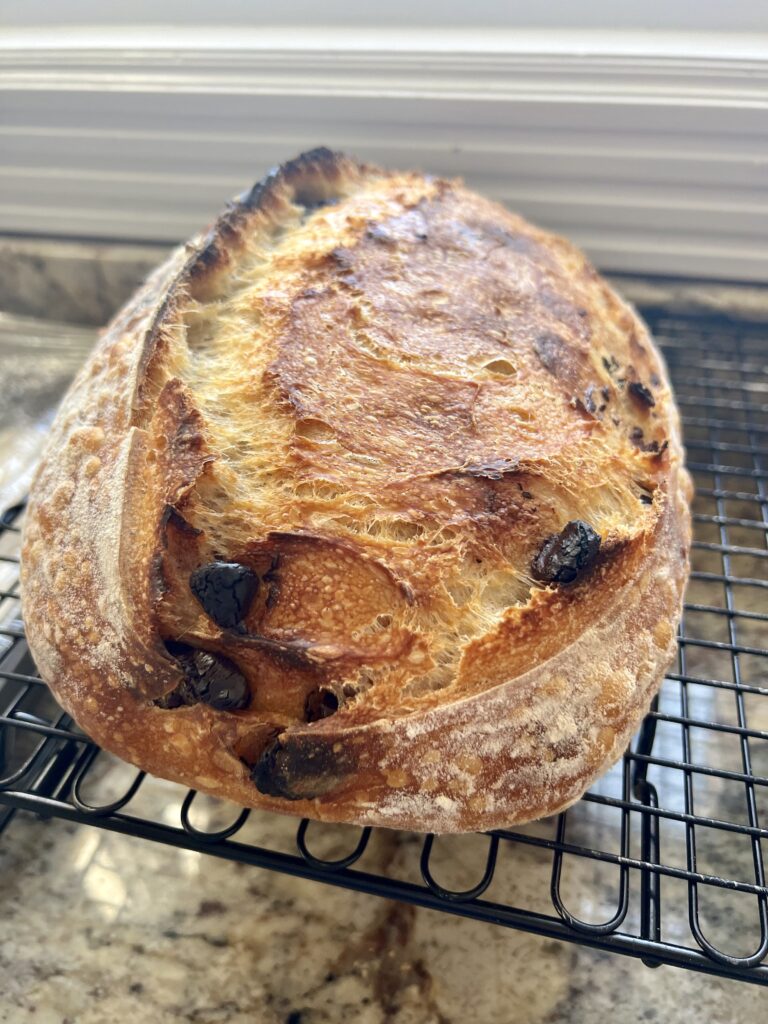
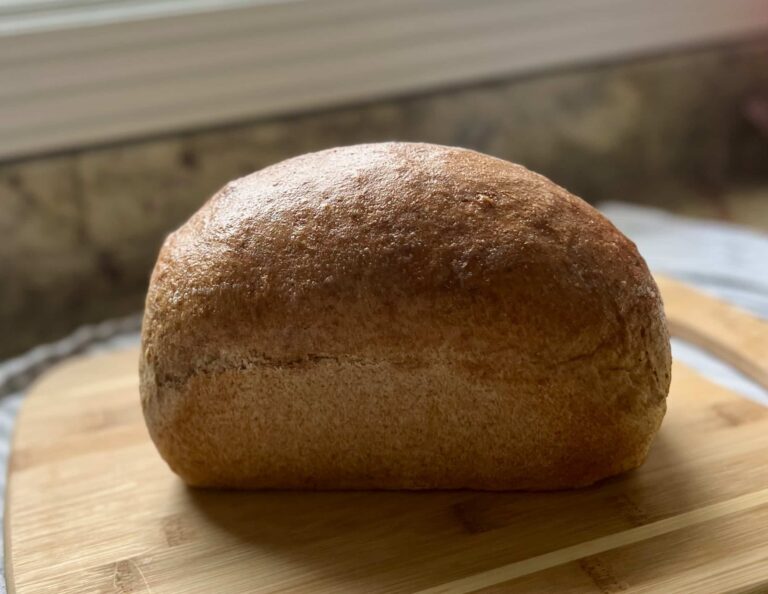
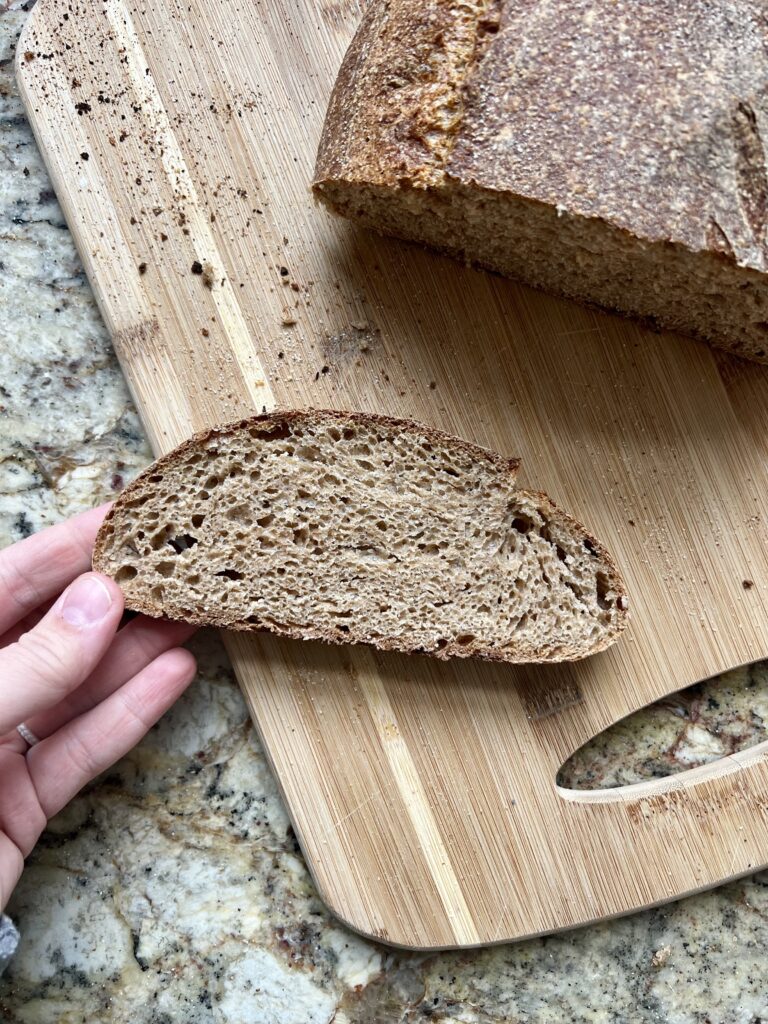

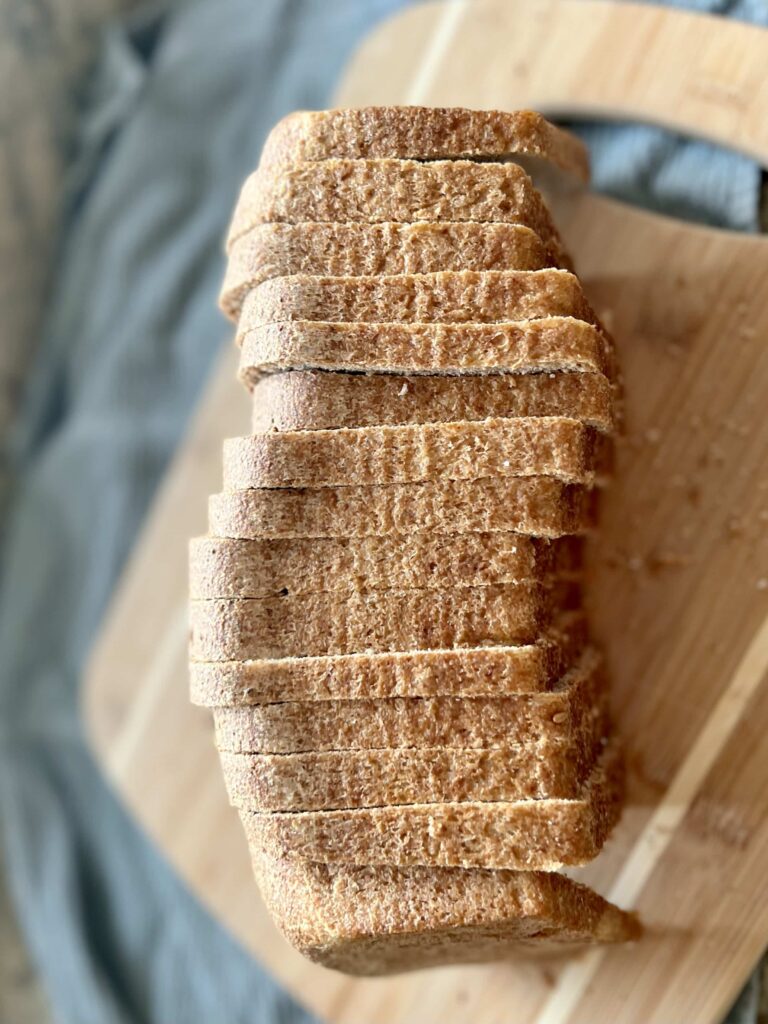
Thank you for this informative post! 🍞👩🏼🍳
Amy,
Thank you for an informative and easy to unde
Amy,
Thank you for an informative and easy to understand format. I can’t believe how much I just learned about flours from this post. Thanks for taking the time to share your knowledge .
So glad this was helpful!
Great article, thanks. I usually bake with about half whole wheat and half bread flour, adding gluten flour to compensate for the whole wheat characteristics.
My go-to source is Bob’s Red Mill. I have also purchased Montana hard red winter wheat flour when I’m near or going through Bozeman. Fantastic bread flour. I baked a batch of pumpkin brioche last night using my usual mix of bread, whole wheat and gluten flours. Mmmm, some of the best toast ever!
I also like to make Swedish Limpa around the holidays. I use half bread flour, half dark rye and lots of gluten flour because rye has such poor gluten. Turns out very nice.